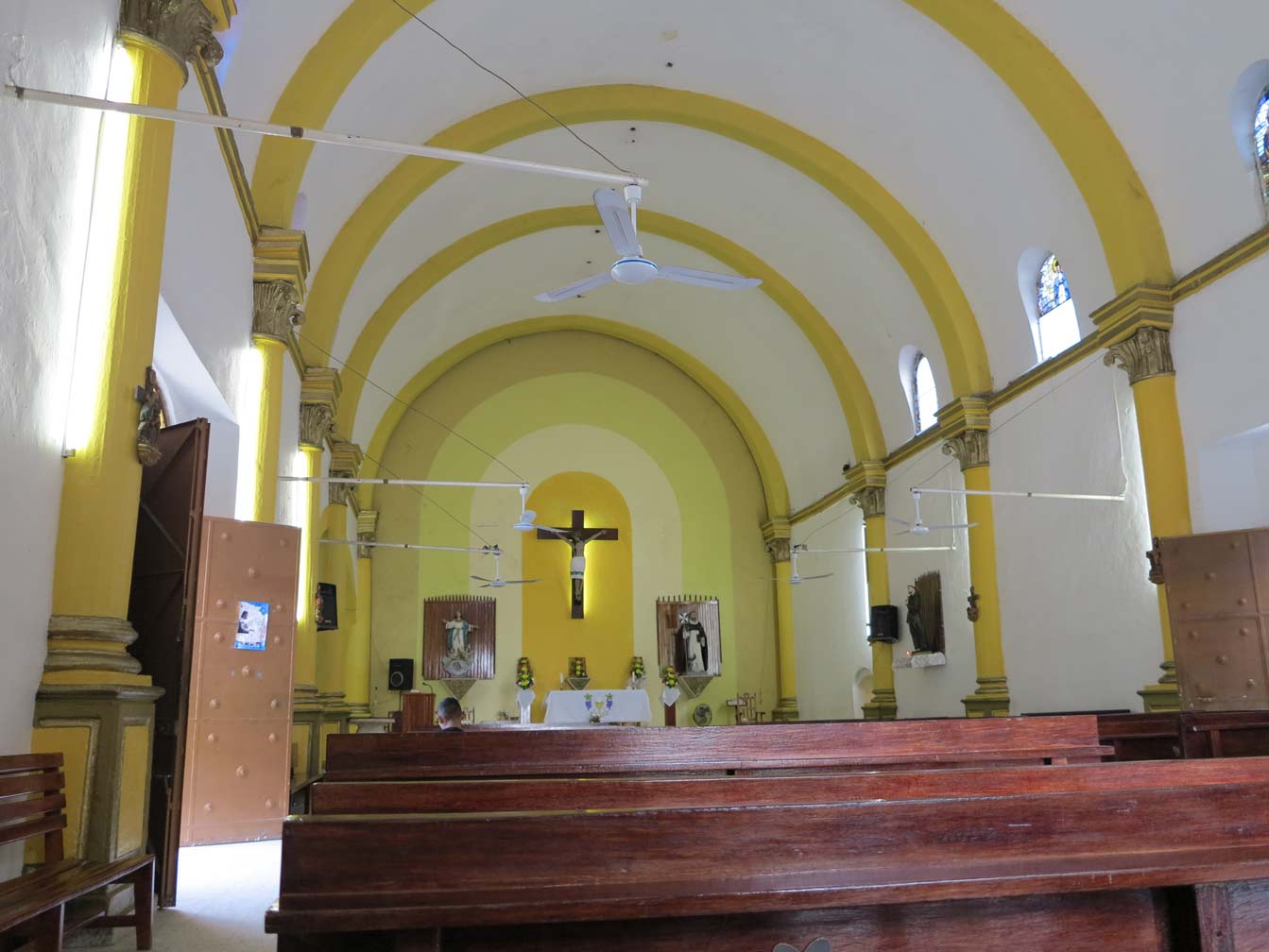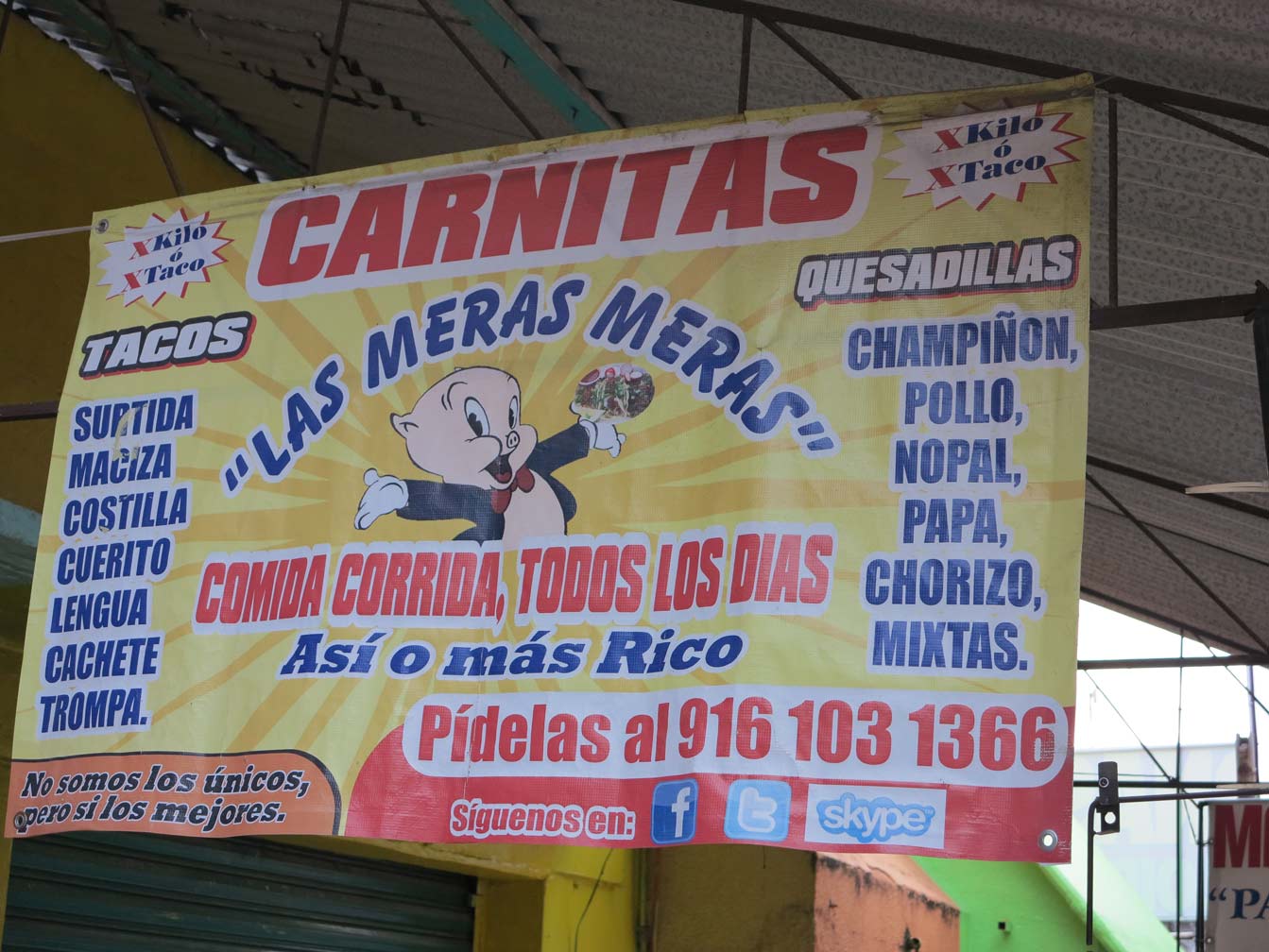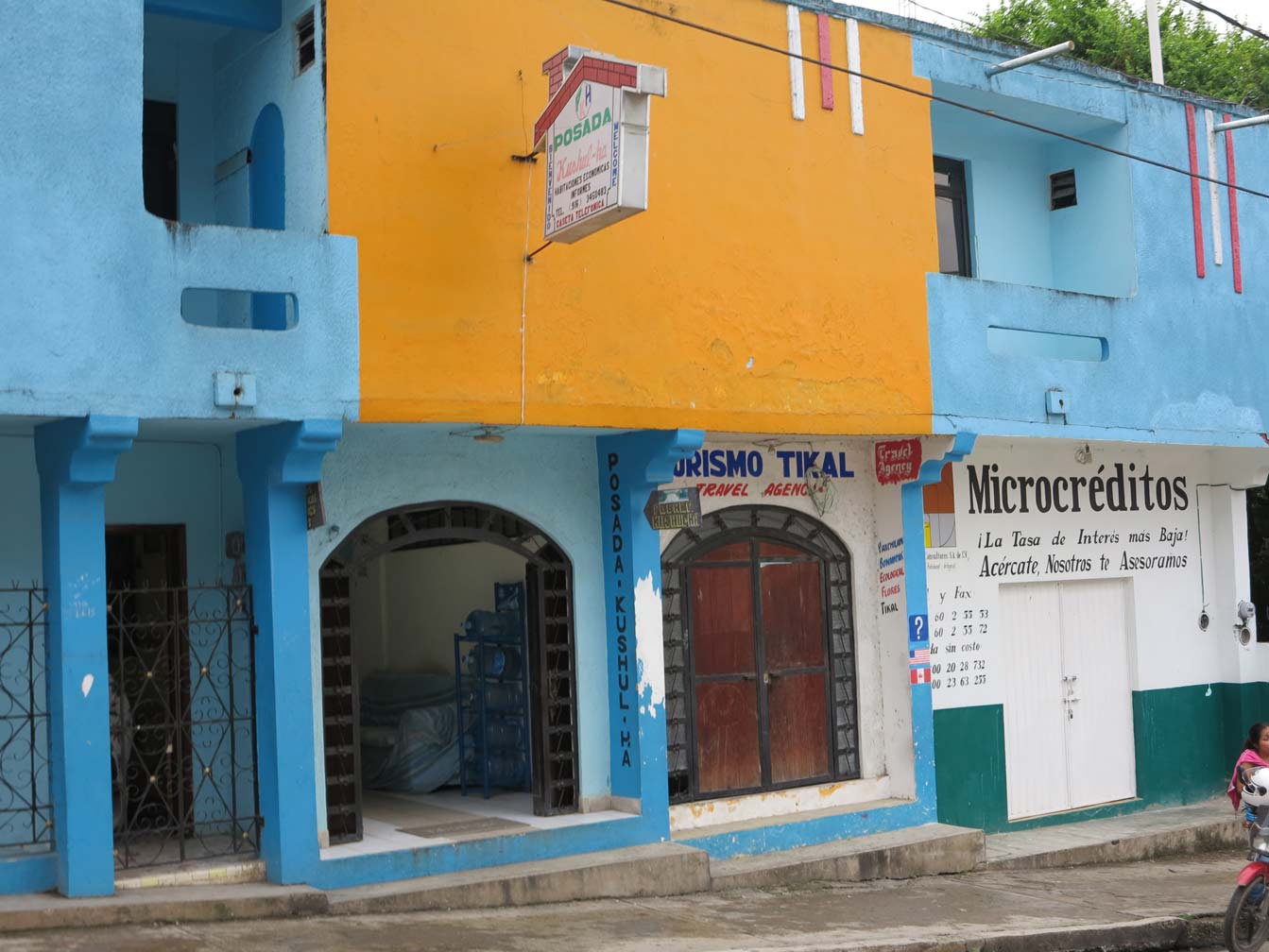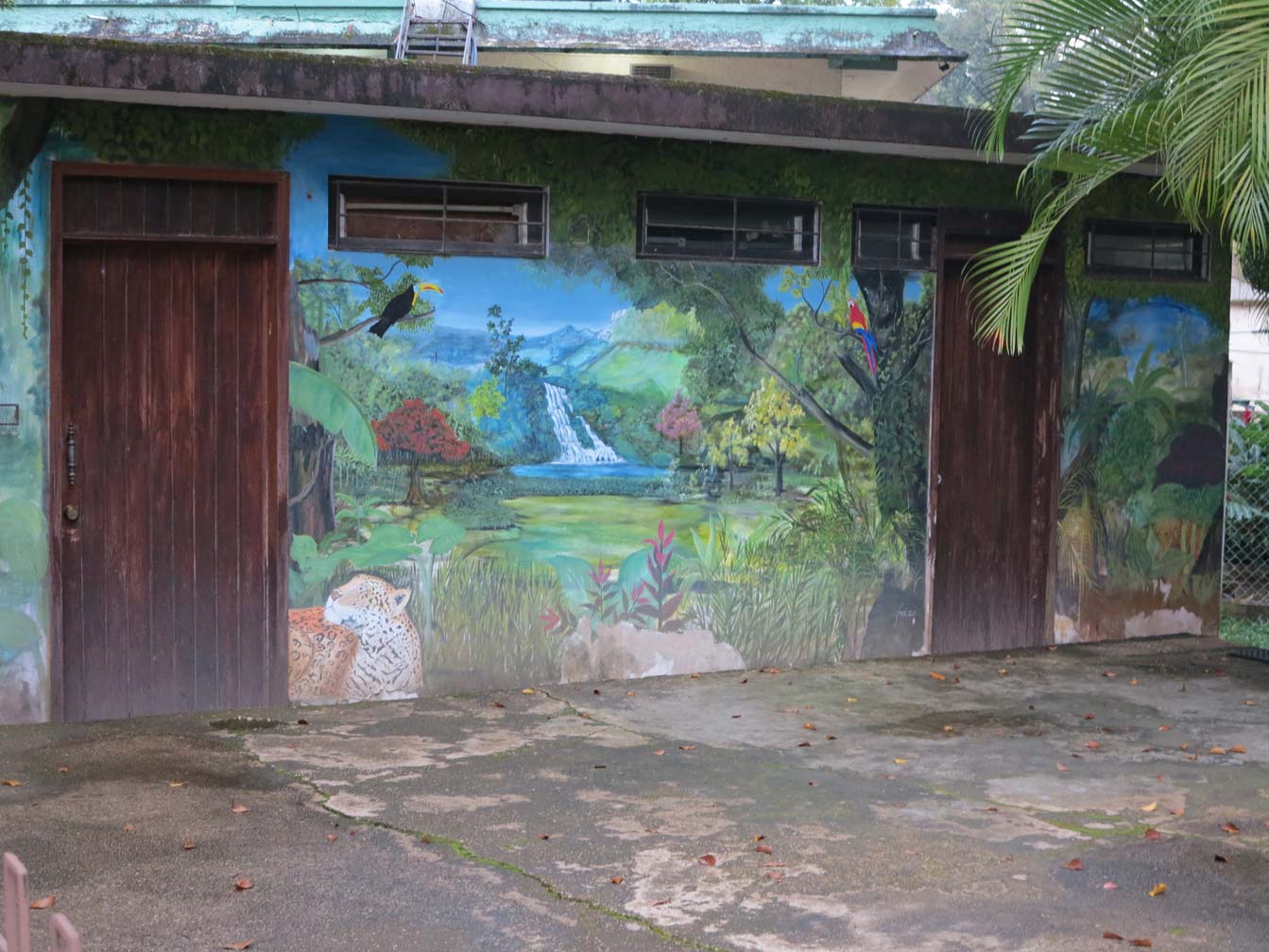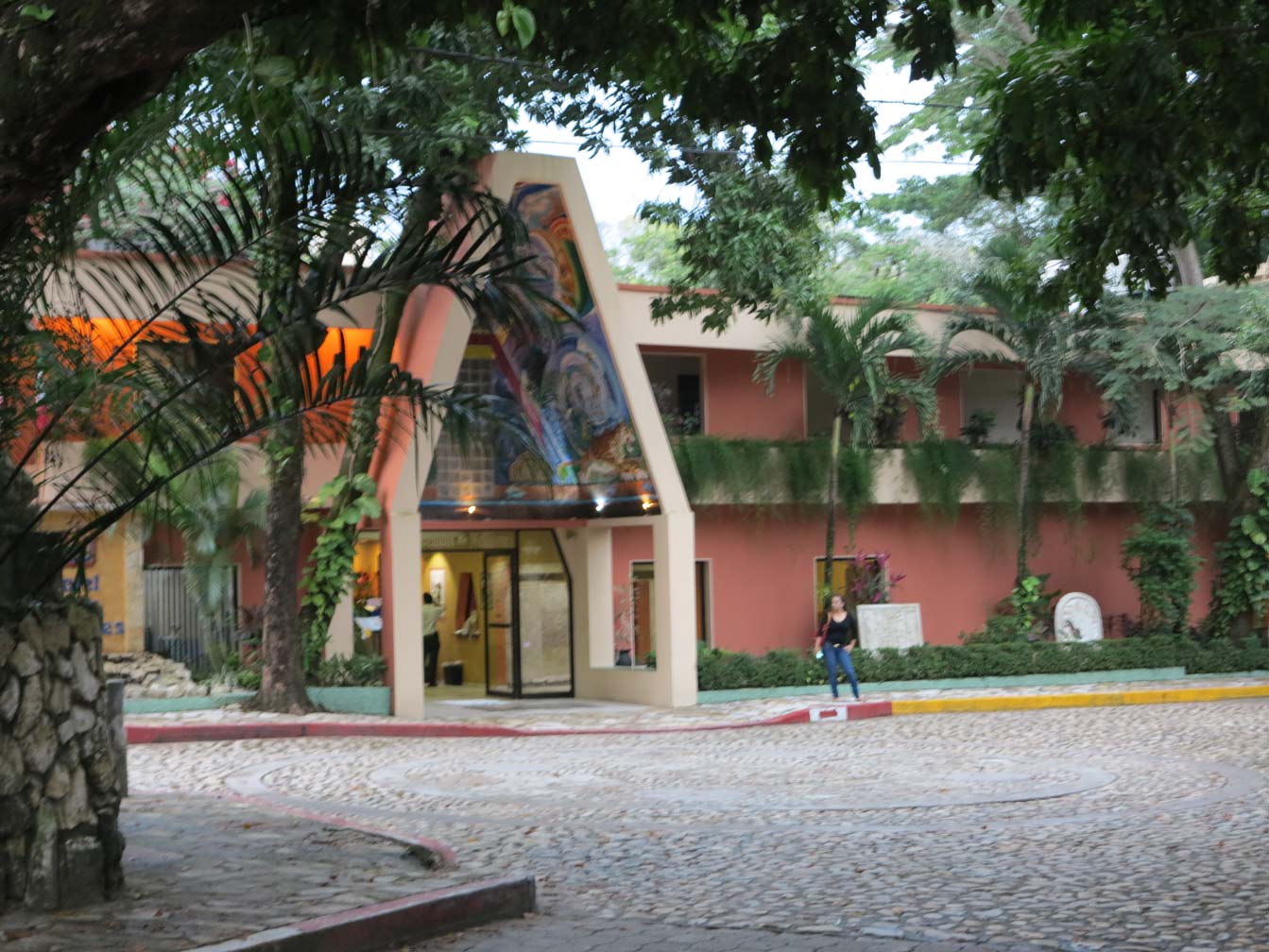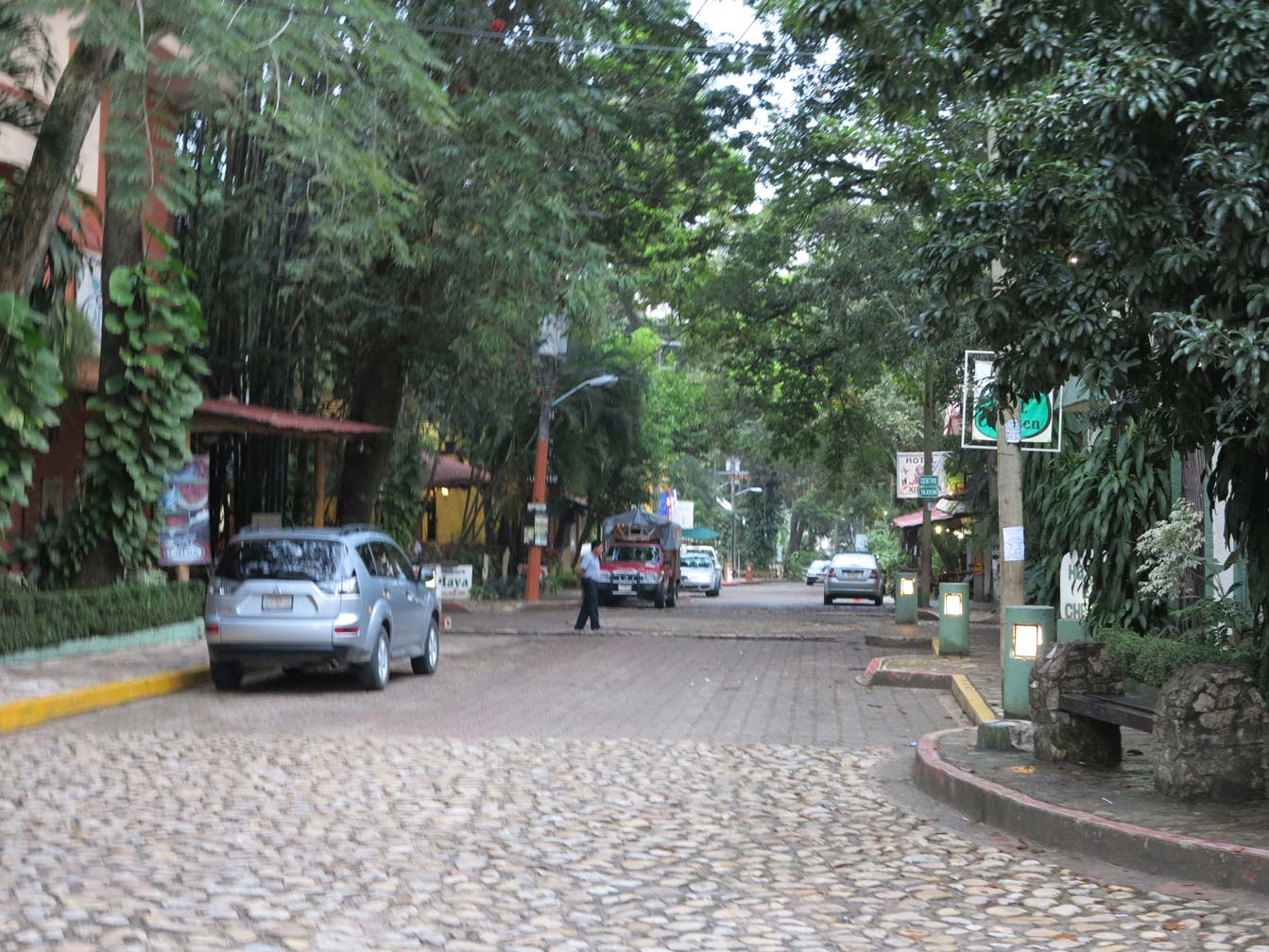Getting to Palenqué from Villahermosa was pretty easy yesterday. A cab to the ADO bus terminal from our hotel cost all of $2.50 Canadian, and small but comfortable combi vans left every hour for the two-and-a-half hour trip for about $15.
Travelling inland on federal highway 186, we had a smooth trip for about an hour. But then the patches and potholes started, and we were bounced around quite a bit as road conditions, probably caused by the double-trailer trucks that seemed to outnumber cars, limited our speed. It was a good thing our driver was obviously familiar with the road, because some of the potholes came up without warning and they seemed deep enough to severely damage a vehicle.
The route was certainly more scenic than the ones we had taken through the Yucatan last year. The countryside was lush, green and rolling, with palm trees dotting the fields in which cattle and horses grazed. There was no agriculture that we could see, only grazing animals.
We frequently saw cowboys riding along the shoulders of the road, or gathering in the small villages we passed. Periodically, speed bumps in a village would slow the traffic to a crawl, and men stood in the middle of the road selling snacks. Unlike on other trips to Mexico, however, our bus did not stop to let them on.
There was only one police checkpoint along the road, where the officers had stopped a tractor-trailer carrying gasoline. By the side of the road, an army guard stood sentry in front of a small military base. He was so short that his rifle was almost as long as he was tall.
Highway devolution
The four-lane highway devolved into one and a half lanes each way. Slow cars and trucks would drive along in the half lane, centring their vehicles along the dividing line. Our bus would pass them, and oncoming traffic would give way to drive in its own half lane. The drivers seemed courteous, almost always anticipating where cars would want to pass and giving way to oncoming traffic. Road conditions dictated speeds as slow as 60 kph.
Gradually, the scenery become more hilly and large outcroppings of rock appeared through a shroud of mist. Finally, we turned off the federal highway and on to a narrow, curvy state road for the last 25 kilometres to Palenqué. Reading our guide books and looking at maps, I could not understand why it would take five hours to get to San Cristobal from Palenqué. Seeing to conditions of the road, I could understand why.
We later learned that the fields we had seen were formerly jungle which had been cut or burned for grazing. Only now are the Maya who live in the area beginning to understand what they had lost.
The town of Palenqué itself doesn’t have anything spectacular to recommend it. The huge stone Maya head that guards the main turnoff from the highway into town was covered in opaque plastic to protect it during the road works which were going on. Nevertheless, it’s a pleasant enough place for a stroll. Walking to the end of the main street, we came to a simple church and sat in the plaza outside, enjoying the faint but cooling breeze as we ate our lime helados (essentially large popsicles), which we bought for about a quarter apiece.
One thing we did learn in Palenqué was the difference between the ATMs of two banks. The Banorté charged us more than 66 pesos (about $5.00) to make a withdrawal, where the HSBC machine in the Oxxo store (the Mexican version of the 7-11) charged less than half of that.







